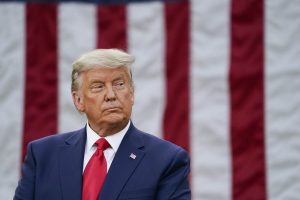A Nevada hearing has revealed a host of election regularities including: the obstruction of witnesses by the United States Postal Service; ballots cast by dead people; improperly calibrated signature verification machines; and election inspections where less than one-third of the GOP’s demands were met.
Since the election contest case was filed, a host of developments have occurred regarding officials receiving access to inspect voting systems and data revealing the extent of fraud in the swing state.
Obstruction.
One such development is that the United States Postal Service (USPS) is “preventing witnesses and whistleblowers from testifying,” concerning wide-scale orders for workers to deliver ballots to nearly 8,000 “undeliverable” addresses. The ballots were later “collected, turned in, and presumably counted.”
“There are multiple key witnesses who are whistleblowers with matching, independent stories supporting these issues, who USPS is trying to obstruct from testifying,” the Nevada GOP notes.
100,000 Forged Ballots.
The state Republican Party is also putting forward a data scientist testifying to over 100,000 unique cases of illegal ballots.
The findings come from an analysis of over two million records including Nevada state voter files, Nevada Election Day voter files, early voting files, consumer data files, and more.
The findings reveal over 40,000 duplicate ballots and 1,500 deceased voters:
- Out of State Voters: Almost 20,000 Nevada voters had a non-Nevada mailing address;
- Non-existent Addresses: Approximately 8,000 voters had registered addresses that are physically non-existent;
- USPS Flags on Non-Residential Addresses: approximately 15,000 voters are registered to vote at either a commercial address or a vacant property;
- USPS Flags on Vacant Addresses: Almost 6,000;
- National Change of Address Out of State: 2,468 voters legally changed their address to another jurisdiction or state or country;
- Deceased Voters: Almost 1,500 Nevada voters listed as deceased by the Social Security Administration (SSA) Master Death File, Consumer Data Vendors, Public Obituary Data Matches, and Credit Bureau Deceased Data voted;
- Duplicate Voter Registrations: 42,000 voters voted twice and have multiple voter registration numbers associated with substantially the same name, birthdate, and address.
‘Guided Tour’
While legal teams in Nevada that sought inspection of the voting machines and systems in Clark County saw their request granted, the Trump campaign legal team slammed the evidence they were offered as little more than a “guided tour.”
The inspection was “like trying to determine if a car had failed brakes without getting underneath the car”:
“The judge’s order allowed for an inspection. What we got was a guided tour. Machines were not usable, and we were not able to make a determination about the accuracy and integrity of the election process based on this inspection. We are entitled to a computer forensic inspection in accordance with the judge’s order. We were prevented from doing one. This was a digital election and we were not allowed a digital inspection. The “inspection” today was like trying to determine if a car had failed brakes without getting underneath the car”.
The forensic team requested the following 11 items:
- Inspect the Tabulation Server;
- Inspect the memory on the Agilis signature verification machine;
- See a “test run” of the Agilis signature verification machine;
- Inspect the memory on the “adjudicator” machines;
- Inspect the USB drive for the dominion machines;
- Inspect the poll books;
- Inspect the memory of the Election Management Server;
- Inspect the “mail ballot readers” or “ICC’s”;
- Inspect the election results drives in the box from the Accuracy Certification Board;
- Inspect the simulation drives in the box from the Accuracy Certification Board;
- Inspect any “ballot marking devices”.
Instead, inspectors were only granted four requests: gather machine serial numbers; witness a voting receipt tabulation for just 42 votes; inspect reports from the Accuracy Certification Board; and watch a machine be powered on.
Suspicious Signatures.
The machines used by the state to certify signatures were also not operated “in conformance with the manufacturer’s recommendations in at least two respects.”
“First, the signature images on file with the State which were used by the Agilis machine to compare to the signatures on the outside of the ballot were of a lower image quality than recommended by the manufacturer in order to allow the machines to operate properly. Second, the signature matching error tolerance was set to a level of 40, 10 points lower than the manufacturer’s recommended level of 50, thus reducing the accuracy of the machine immensely,” the report notes.
In addition to improper calibration and low image quality, Nevada law stipulates that “the clerk or an employee in the office of the county clerk shall check the signature used for the mail ballot in accordance with” detailed procedures, “which do not include relying on software to verify matching signatures.”
Despite this, Agilis machines independently verified 30% of the signatures without ever having human eyes inspect those signatures.
The hearing began on Thursday December 3rd at 1:30pm PST at the First Judicial District Court.






